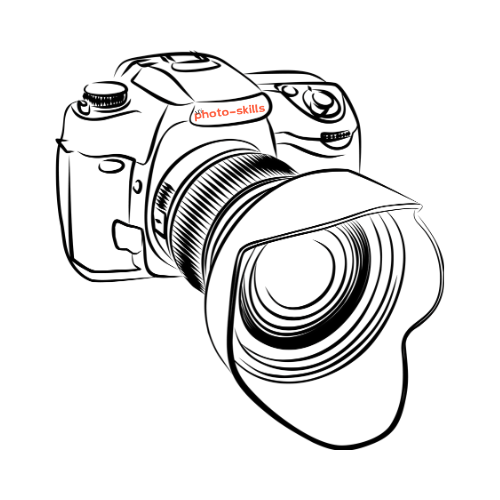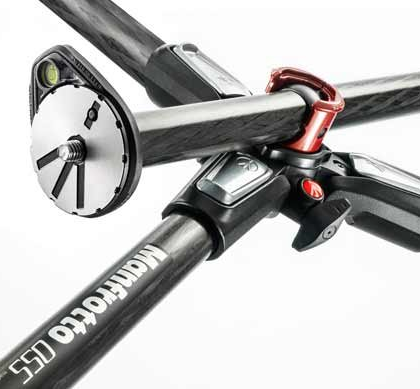I am often asked my opinion of what is a good tripod.
Most times my honest answer is welcome, occasionally it isn’t welcome at all.
When it isn’t it is usually when someone has spotted, or bought, a bargain and just wants confirmation that it is a bargain. Well that depends on the definition of bargain and in my book ‘cheap’ is only part of what makes up a bargain, the other half is quality. So it all boils down to value
Don’t get me wrong there are lots of bargains out there that really are bargains but the ones I am attacking are the cheap junk bargains!
There – I said it.
You buy a tripod for a reason – let’s start there.
Contents
The Function of A Tripod – it’s not about size!
At the end of the day the sole purpose of a tripod is to facilitate the taking of an in-focus photo or photos.
In my post about taking tack sharp photos I explained the many possible causes of an out-of-focus camera and one of those was camera shake. Camera shake can be caused by bad technique, a too slow shutter speed etc.
By mounting a camera and lens on a tripod you are reducing the possibility of camera shake as a result of human error.
Human error is not the only thing that can cause camera shake so I want to touch on a few other things you need to be aware of when using a tripod:
- The vibration reduction or image stabilizer built into the lens you are using. This is an automated correction that will operate even when your camera is mounted on a tripod. The camera does not know that it is mounted so the VR/IS option will still function and correct something that no longer needs correcting. Turn it off when using a tripod. You’ll find the switch on the lens body.
- Ground stability – sounds crazy I know but I once took an out of focus shot of the moon. I did everything right, or so I thought until I realized I was on a wooden deck (we’re big on our wooden decks in New Zealand) and so were 3 other people all walking around. The deck was moving! The same can happen on sandy soil (think beach) where the tripod legs could be sinking into the ground.
- A tripod doesn’t do too well on a floating jetty either – for obvious reasons.
- Windy conditions (we get a lot of that here too) can blow your set-up around. Most good tripods come with some sort of hook at the bottom of the center column for hanging something with a bit of weight for more stability.
- Oh and remove your strap as the wind will blow that around too.
- Mirror slap will cause some camera shake. I often use a remote-control release with the ‘mirror up’ function. This means I need to press the remote shutter twice, once to get the mirror slap out of the way and the second time to open the shutter.
- Make sure the leg locks are tightly fastened.
- Ensure the base plate attached to the camera is tight – they can work themselves loose without you knowing so always check these otherwise the camera will move.
- Check that the tripod head is also secure. With all the adjustments available on them it is easy to leave one slightly loose.
What to Look For in a Tripod – something solid and dependable.
What you are looking for in a tripod will depend on what conditions you will use it under. For example studio work and hiking or tramping are two different things. The irony of those two examples is that you probably need a more sturdy one for tramping than studio work but with sturdy usually 9but not necessarily) comes weight. You may not want to be lugging something heavy to the top of Mount Everest (despite being a Kiwi I’ve never been up there).
No matter the genre of your work the following are essential (my opinion) requirements for a tripod:
- Load capabilities. The horror stories I heard, and results I saw, when working in a camera shop of heavy gear being put on (cheap) flimsy tripods. Why oh why would you spend so much money on a good camera to go and put it on a piece of junk? To save yourself $100 – really? “Goed koop is duur koop” – cheap is expensive!
- When calculating the load capability work on the weight of your heaviest lens and your camera and then add some – “better safe than sorry” is my motto.
- Head load. That’s the part that connects the base plate, secured to the camera, on to the tripod. Check the load capabilities of your head too. No point in having a 15lbs tripod capability with a 3 lb capability load head.
- A good head is one with a variety of options with positions, quick release option and smooth working. A good head can often cost more than the tripod legs but as they are interchangeable they are a good investment.
- Maximum height of the tripod. Hey I’m short for a male at about 5’9″ (OK I’m actually 5’8″ and a half) and hate having to bend all day. It really does get tiring so get one that is comfortable for your height. This is far more important than how small it packs up – although that is important for hiking and traveling.
- Strong and sturdy legs that lock into place tightly. A good set of legs should have a few height adjustment options as well as independent angle options – so that you can adjust accordingly on uneven ground.
- A center column that can be turned around and offset at an angle for use in a variety of functions. Nice features to have even if you only ever use it a couple of times. It’t better to have it than not to have it.
Buying a Cheap Tripod is a Bad Idea – and the most expensive option!
There is one instance and only one when buying a “cheap” tripod is a bad idea and that is always!
(Unless it really is a bargain that you picked up from a friend or deceased estate or someone who doesn’t really know the value and quality of something like a Manfrotto.)
Buying a cheap tripod is a bad idea because it could well result in an expensive accident and at best won’t get you a tack sharp photo.
However you also need to bear in mind that expensive does not automatically translate into good quality either.
See the following paragraph and think of using a cheap tripod in these circumstances.
When to Use a Tripod
- Whenever you can. A tripod is extremely useful and a great photography aid – if you have one use it as often as possible. Using it often helps slow us down to concentrate on framing the photo correctly. Getting it right in camera saves a lot of work in post processing and a tripod is an easy way to help with this.
- In studio – especially if it is a long day of continuous shooting. Take the load off your neck, arms and shoulders.
- Landscape photography is probably the most common use for tripods. These can often be long exposures with small apertures and low light.
- When testing or tuning your lens. To check if your lens is sharp you really cannot rely on hand held shots. I always use a tripod and a remote with my camera set on mirror-up. I also use manual focus. With that combination I can be pretty certain that my photos are consistent and any problems relate to the lens. I used this recently when considering buying a second hand lens from a friend. The lens was not up to scratch and I saved myself NZ$1000.00 – that alone paid for my 3 year old $380.00 tripod
- When doing long exposures – multitude of scenarios here.
- For multiple shots used in HDR and focus stacking (commonly with macro photography), night shots, time lapses etc.
Final Word on What I Believe is a Good Tripod …
I hope this post has helped you realize that a good tripod is not only useful but it too must be of the highest quality to protect your equipment and produce the results you are after.
Which Tripod do I recommend?
I have to be honest here and say that Manfrotto gets my vote for pure reliability, strength, features and great engineering. I honestly believe that money spent on a good tripod is money well invested and for that reason recommend the Manfrotto 055.
You can see my full review on the Manfrotto 055 by clicking here
I always like to hear from you about your photography and gear. So tell me below what tripod you use and why.
Let’s get talking so we all benefit from mass knowledge and experience.


Well, I’m afraid I can’t give you an opinion on what tripod I use, but I can tell you that I’ve seen some pretty crazy tripods that would absolutely, never in a million years, be a good idea for taking serious photos.
I’m not an expert in the matter, but even I could tell they would never work.
This is useful information you got here. I like how you pointed out that you can get an idea of what’s wrong with your pictures (the lens or the image stabiliser). If it’s not the tripod, and not the other factors (such as movement, wind, etc.) then you know it’s the lens.
That’s why having a good tripod is important!! I will keep that in mind.
Thank you.
Hello Brandon – thanks for commenting.
I absolutely agree with you that sometimes just looking at a tripod you can see its not going to be able to do the job.
What amazes me is why people who buy these things can’t see it. And then of course you have to wonder about the manufacturer churning these things out!
We may make a keen photographer of you yet.
Thanks once again for your comments
Lawrence
You have a grammatical error in the header titled what to look for in a tripod. I feel like you can have more flash in your headers.
How about instead of conclusion. Put over all.
Can you elaborate more on reliability strength and engineering. This is great work and it got my attention. Thank You.
Heu Raymond.
Thanks for spotting the mistakes – hey I’m a photographer not an English Master! 🙂
I need folks like you to spot these things – I write and hit send. I have fixed the points you mentioned – have I done good? 🙂
More on reliability strength and engineering? Mmmm …
Let me give that some thought – I need to find a way to do that without getting too technical.
I thought I had pretty much covered it but I am sure I can find more detail (which seems now to be lacking)
I’ve got a few things to do before I get to it though so give me a few days.
Have a great day – its a holiday over here in New Zealand, ANZAC day where we Remember those who sacrificed their lives in wars so that we have the freedom we have today.
Hope to chat again soon
Lawrence